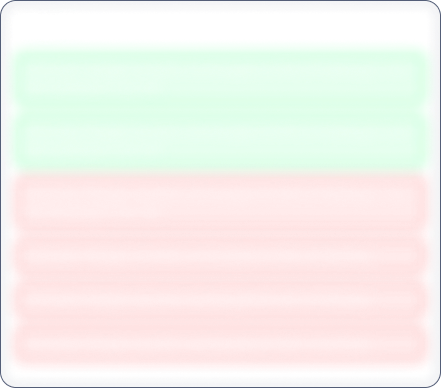Month End Sale 60% off
Dev Accelerator

No Data Available
Investor Sentiment
Dev Accelerator Share price and Fundamental Analysis
Key Metrics
Stock Returns
Stock Heatmap

No Stocks
Smart Score

Unlock Smart Score
See Detailed Analysis & Insights


Unlock Insights
See Detailed Analysis & Insights
Technicals
Returns Calculator
If you would have investedResearch Report
No Research Report
Corporate Action

No Data Available
Financials
Key Ratios
ROE
Avg ROE (3 Yrs) : NaN%
ROCE
Avg ROCE (3 Yrs) : NaN%
ROA
Avg ROA (3 Yrs) : NaN%
NPM
Avg NPM (3 Yrs) : NaN%
Dividend History
5 Year FactSheet
Documents

No Data Available
News
Dev Accelerator Management and History
Company Management


Unlock Management Data
See Detailed Analysis & Insights
Company History
Dev Accelerator Limited originally started the business as a Limited Liability Partnership under the name and style of 'Dev Accelerator LLP' on September 14, 2017 under the Limited Liability Partnership Act, 2008, issued by the RoC. Subsequently, the Limited Liability Partnership was converted into a Private Limited Company and a Certificate of Incorporation dated September 05, 2020 was issued by the Registrar of Companies, Central Registration Centre under the name and style of Dev Accelerator Private Limited'. The Company further was converted into a Public Limited Company and a fresh Certificate of Incorporation upon conversion to Public Limited dated September 3, 2024 was issued by the RoC, resulting the Company name was changed to its present name, Dev Accelerator Limited'.
The Company is one of the largest flex space operators in terms of operational flex stock in Tier 2 markets. Specializing in complete Built to Suit Managed Office Solutions for enterprises, it established a presence across 15 submarkets in India across Tier 1 markets of Delhi NCR, Hyderabad, Mumbai, Pune and Tier 2 markets of Ahmedabad (including Gandhinagar), Indore, Jaipur, Udaipur, and Vadodara. In addition to these, it has an operational Centre in Rajkot.
The Company further provide integrated services from sourcing office spaces, customizing designs, developing spaces and providing technology solutions to providing complete asset management. The Company started operations in 2017 in providing flexible office space solutions. The Company launched first center in Ahmedabad with 1,250 seating capacity in 2018 and thereafter in Vadodara with a capacity of 550 seats. In 2019, it launched first center in Mumbai with 400 seat capacity and introduced a new centre in Ahmedabad with 550 seating capacity. In 2020, it launched a capacity of 700 seats in Hyderabad. It added two new centers in Ahmedabad with a capacity of 380 seats in 2021, In 2022, launched 280 seats in Rajkot; 400 seats in Pune; 800 seat capacity in Noida and again 350 seats in Noida, in Mumbai with 500 v capacity; added 2 new centres in Ahmedabad with 1960 seats; and in Pune with 350 seats.
In 2023, the Company launched 255 seat capacity in Indore. In 2024, it launched 110 seats in Udaipur; and has further added 2 new centers in Ahmedabad with 480 seats.
The Company is planning an Initial Public Fresh Issue upto 24,700,000 Equity Shares.
Dev Accelerator Share Price
Dev Accelerator share price reflects investor sentiment toward the company and is impacted by various factors such as financial performance, market trends, and economic conditions. Share price is an indicator which shows the current value of the company's shares at which buyers or sellers can transact.
Dev Accelerator Market Cap
Market capitalization of Dev Accelerator indicates the total value of its outstanding shares. Marketcap is calculated by multiplying share price and outstanding shares of the company. It is a helpful metric for assessing the company's size and market Valuation. It also helps investors understand how Dev Accelerator is valued compared to its competitors.
Dev Accelerator PE Ratio
Dev Accelerator PE ratio helps investors understand what is the market value of each stock compared to Dev Accelerator 's earnings. A PE ratio higher than the average industry PE could indicate an overvaluation of the stock, whereas a lower PE compared to the average industry PE could indicate an undervaluation.
Dev Accelerator PEG Ratio
The PEG ratio of Dev Accelerator evaluates its PE ratio in relation to its growth rate. A PEG ratio of 1 indicates a fair value, a PEG ratio of less than 1 indicates undervaluation, and a PEG ratio of more than 1 indicates overvaluation.
Dev Accelerator ROE (Return on Equity)
Return on Equity (ROE) measures how effectively Dev Accelerator generates profit from shareholders' equity. A higher ROE of more than 20% indicates better financial performance in terms of profitability.
Dev Accelerator ROCE (Return on Capital Employed)
Return on Capital Employed (ROCE) evaluates the profitability of Dev Accelerator in relation to its capital employed. In simple terms, ROCE provides insight to investors as to how well the company is utilizing the capital deployed. A high ROCE of more than 20% shows that the business is making profitable use of its capital.
Dev Accelerator Total Debt
Total debt of Dev Accelerator shows how much the company owes to either banks or individual creditors. In simple terms, this is the amount the company has to repay. Total debt can be a very useful metric to show the financial health of the company. Total debt more than equity is considered to be a bad sign.
Dev Accelerator Debt to Equity Ratio
The Debt-to-Equity (DE) ratio of Dev Accelerator compares its total debt to shareholders' equity. A higher Debt to Equity ratio could indicate higher financial risk, while a lower ratio suggests that the company is managing its debt efficiently.
Dev Accelerator CAGR (Compound Annual Growth Rate)
CAGR shows the consistent growth rate of Dev Accelerator over a specific period, whether it is over a month, a year, or 10 years. It is a key metric to evaluate the company’s long-term growth potential. Main metrics for which CAGR is calculated are net sales, net profit, operating profit, and stock returns.
Dev Accelerator Technical Analysis
Technical analysis of Dev Accelerator helps investors get an insight into when they can enter or exit the stock. Key components of Dev Accelerator Technical Analysis include:
Support Levels (S1, S2, S3)
There are usually multiple support levels, but the main support levels for a stock are S1, S2, S3. Support levels indicate price points where stock might get support from buyers, helping the stock stop falling and rise.
Resistance Levels (R1, R2, R3)
There are usually multiple resistance levels, but the main resistance levels for a stock are R1, R2, R3. Resistance levels represent price points where Dev Accelerator shares often struggle to rise above due to selling pressure.
Dev Accelerator Dividends
Dividends refer to the portion of the company’s profits distributed to its shareholders. Dividends are typically paid out in cash and reflect Dev Accelerator ’s financial health and profitability.
Dev Accelerator Bonus Shares
Bonus shares are usually given by companies to make the stock more affordable, increase liquidity, boost investor confidence, and more.
Dev Accelerator Stock Split
Stock split increases the number of its outstanding shares by dividing each existing share into multiple shares. When the company offers a stock split, the face value of the stock reduces in the same proportion as the split ratio.
Dev Accelerator Financials
The financials of Dev Accelerator provide a complete view to investors about its net sales, net profit, operating profits, expenses, and overall financial health. Investors can analyze financial data to assess the company’s stability and also understand how the company has been growing financially.
Dev Accelerator Profit and Loss Statements
The profit and loss statement of Dev Accelerator highlights its net sales, net profit, total expenditure, and operating profits in the current financial year. This Profit and Loss statement is crucial for evaluating the profitability and financial stability of Dev Accelerator .
Dev Accelerator Balance Sheet
The balance sheet presents a snapshot of Dev Accelerator ’s assets, liabilities, and equity of shareholders, providing insights into the financials of the company.
Dev Accelerator Cashflow Statements
Cashflow statements track the company's cash inflows and outflows over a period. It is an essential tool for understanding how well the company manages its liquidity and finances.


